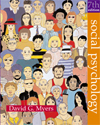 |
1 |  | 
The three dimensions of attitude are |
|  | A) | aptitudes, behavior, and cognition. |
|  | B) | affect, behavior, and cognition. |
|  | C) | attraction, behavior, and compliance. |
|  | D) | aptitudes, behavior, and cognition. |
 |
 |
2 |  | 
The procedure that fools people into disclosing their attitudes is |
|  | A) | bogus pipeline. |
|  | B) | denial paradox. |
|  | C) | low-ball technique. |
|  | D) | foot-in-the-door phenomenon. |
 |
 |
3 |  | 
In response to external circumstances ___________________ people adjust their behavior. |
|  | A) | intelligent |
|  | B) | depressed |
|  | C) | self-conscious |
|  | D) | unintelligent |
 |
 |
4 |  | 
You can measure attitudes by which of the following techniques? |
|  | A) | bogus pipeline |
|  | B) | overjustification pipeline |
|  | C) | self-monitoring pipeline |
|  | D) | low-ball technique |
 |
 |
5 |  | 
The text asserts that the tendency for oppressors to disparage their victims is an example of |
|  | A) | how attitudes shape behavior. |
|  | B) | how behavior shapes attitudes. |
|  | C) | bogus pipeline. |
|  | D) | how role playing comes to shape one's self-identity. |
 |
 |
6 |  | 
The tendency for people who have first agreed to a small request to comply later with a larger request is the |
|  | A) | low-ball phenomenon. |
|  | B) | role-playing phenomenon. |
|  | C) | self-presentation phenomenon. |
|  | D) | foot-in-the-door phenomenon. |
 |
 |
7 |  | 
A variation of the foot-in-the-door phenomenon is the |
|  | A) | bogus technique. |
|  | B) | low-ball technique. |
|  | C) | self-monitoring technique. |
|  | D) | justification technique. |
 |
 |
8 |  | 
Salespeople try to prevent customers from canceling their purchases by |
|  | A) | calling everyday until the agreement is final. |
|  | B) | having the customer fill out the sales agreement. |
|  | C) | enlisting them as satisfied customers. |
|  | D) | giving them names and numbers of other satisfied customers. |
 |
 |
9 |  | 
The text asserts that changing behavior can alter attitudes. Which of the following is an example? |
|  | A) | civil rights legislation |
|  | B) | capital punishment |
|  | C) | traffic laws |
|  | D) | prohibition |
 |
 |
10 |  | 
The term brainwashing describes what happened to American POWs during which war? |
|  | A) | World War I |
|  | B) | World War II |
|  | C) | Korean War |
|  | D) | Vietnam War |
 |
 |
11 |  | 
The theory that states for strategic reasons we express attitudes that make us appear consistent is |
|  | A) | cognitive theory. |
|  | B) | consistency theory. |
|  | C) | self-presentation theory. |
|  | D) | self-perception theory. |
 |
 |
12 |  | 
The reduction of dissonance by internally justifying one's behavior when external rewards are lacking is |
|  | A) | cognitive dissonance effect. |
|  | B) | insufficient justification effect. |
|  | C) | psychological reactance effect. |
|  | D) | self-monitoring effect. |
 |
 |
13 |  | 
Cognitive dissonance theory was authored by |
|  | A) | Festinger. |
|  | B) | Ellis. |
|  | C) | Carlsmith. |
|  | D) | James. |
 |
 |
14 |  | 
According to self-perception theory, behavior shapes attitudes |
|  | A) | when attitudes are strong and consistent. |
|  | B) | only in the area of legislation. |
|  | C) | in self-monitoring people. |
|  | D) | when attitudes are weak and ambiguous. |
 |
 |
15 |  | 
The result of bribing people to do what they already enjoy doing is the |
|  | A) | self-monitoring effect. |
|  | B) | overjustification effect. |
|  | C) | self-presentation effect. |
|  | D) | underjustification effect. |
 |
 |
16 |  | 
The text states that you are least likely to feel dissonance when |
|  | A) | you have made a difficult decision. |
|  | B) | you have harmed a friend. |
|  | C) | the act is done in the privacy of your home. |
|  | D) | you have been paid a sum of money for telling a lie. |
 |
 |
17 |  | 
According to the text, which of the following are true of self-perception and cognitive dissonance theories? |
|  | A) | Self-perception theory has more support and evidence. |
|  | B) | Evidence exists to support both theories. |
|  | C) | Cognitive dissonance theory has more support and evidence. |
|  | D) | They are mutually exclusive; therefore one has to be correct. |
 |



 2002 McGraw-Hill Higher Education
2002 McGraw-Hill Higher Education